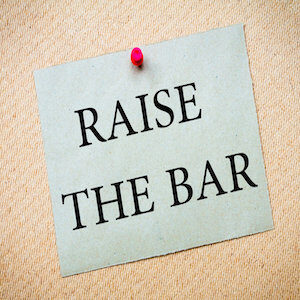By Dr. Ken Broda Bahm:
As you’re waiting your turn for voir dire, you notice that plaintiff’s counsel is getting a fair number of potential jurors to admit that they might have a bias — against lawsuits, against plaintiffs’ attorneys, against various damage categories, in favor of personal responsibility, and in favor of parties like the defendant, your client. In each case, the attorney seals the deal by getting the panelist to agree that Yes, it is a strong opinion, it is unlikely to change, and yes, they’re probably the wrong juror for this case.
As you mutely witness your adversary effectively multiplying the number of their strikes, it occurs to you that you are going to have to try to claw at least some of these jurors back through rehabilitation. In the process, part of your message ought to be that, contrary to opposing counsel’s repeated suggestion, just having an opinion, even a strong opinion, shouldn’t mean disqualification for jury duty. You need to raise the standard. One strategic consideration, of course, is that in raising the standard for the plaintiff’s cause strikes, you may also be raising the standard for our own cause strikes. However, in some situations and venues, it is likely that a higher cause threshold will hurt the plaintiff more than it will hurt the defense. And, of course, the shoe could be on the other foot. When your opposition is likely to have more cause-challenges than you, it makes sense to try to restrict the number of removals even if it means that you need to rely more on strikes than on cause challenges. In this post, I will share a general script for raising the cause-bar for the party going second in voir dire.
The following are my recommendations for setting the stage for a higher standard for cause challenges at the start of defense voir dire, after introducing yourself.
Now one thing that is a little odd about this part of the process is that you’re being asked what you think, but you have heard nothing about the actual facts of the case yet. You might think you have a general idea, but nothing covered by either Ms. Smith or myself at this stage which is part of what you will be reacting to when you go back to discuss the case and reach a verdict. No part of the questioning at this first stage should ever be part of your deliberations at the last stage.
By a show of hands, how many of you understand that this part is not the case? [Look for all hands to be raised]. Thank you.
So what that means is, if you have a strong opinion at this point, it isn’t a strong opinion about this case. It may be a strong opinion about something else, about something outside this courtroom, but not about this case, because you haven’t heard about this case yet.
Again, by a show of hands, is that fair? Do you agree? [Look for all hands]
Is there anyone who thinks they have heard enough about the actual facts of this case to have a clear opinion on it? [Look for there to be no hands]. Okay, good.
Now, Ms. Smith just spent a fair amount of time asking about your opinions, and I want to emphasize, as she did, that opinions are okay. Even strong opinions are okay. The only thing that is not okay – for those asked to ultimately serve on the jury – are opinions that are so strong that they prevent you from seeing, understanding, and following the evidence, or opinions that are so powerful that you would prefer those opinions over the instructions from this judge. It is only when the situation is that someone feels, “My opinion is so strong that I won’t look at the evidence, I won’t listen to this judge.”
While you were talking with Ms. Smith, several of you said that you had a strong opinion about something. Go ahead and raise your hand if you remember saying to Ms. Smith that you had a strong opinion [If there are plaintiff-cause candidates who don’t raise their hands, call them out: i.e. Mr. Jones, I thought I remembered you sharing an opinion about lawyers, is that right?]
Now, keep your hands up for a moment. Remember what I just said about the only opinions being not okay for our purposes are those that are so strong that they prevent you from seeing, understanding, and following the evidence, or following the instructions from this judge. If that applies to you, keep your hands up – if they’re so strong they will overwhelm the facts of this case, the evidence you haven’t heard yet, and the judge’s instructions, then keep your hand up. But if it doesn’t apply to you, then go ahead and lower your hand.
[Individually rehabilitate anyone with their hands still up] Mr. Jones, I see you still have your hand up:
- Is it just that it might be a challenge for you? But with effort, you think you could do it?
- You couldn’t have already formed an opinion on this case, right?
- Is it reasonable to expect that your thinking will be different once you see the evidence?
- Bottom line, would you be able to listen to and follow the judge’s instructions?
Naturally, all of these potential jurors are strike targets for the other side. The more of them you can force them to use a strike on, the better.
______________

Thanks for reading. I am a litigation consultant (bio here) specializing in mock trial research, witness preparation, jury selection, and case strategy, generally (but not always) in high-value civil cases. If you have a comment, a request for a future topic, or a concern about a current area of litigation, or a question about your own case, contact me now.
Other Posts on Voir Dire:
- Don’t Expect Cause Challenges to Do the Work of Peremptories
- Ask for a Jury Questionnaire Every Time, Especially Now
- Press for Extended Voir Dire (and Don’t Trust Judicial Rehabilitation)